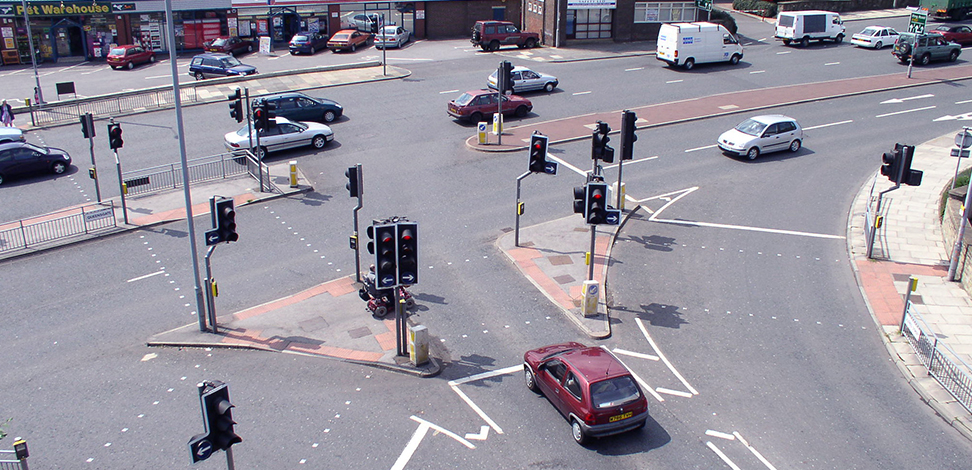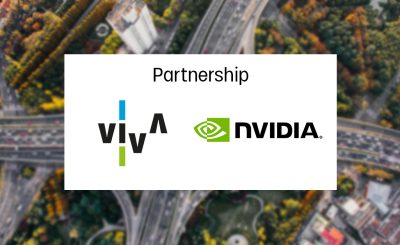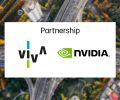Tackling congestion requires a collaborative effort. One that joins technological advancements with schemes and campaigns that simultaneously encourage behavior changes and introduce physical changes – driven by data – to enable such change.
Real-world trials of AI and Smart Junctions have demonstrated a 23% reduction in journey times across a single junction. It signals a major step forward in creating the ability to optimize traffic flow without having to build more infrastructure or lay more tarmac. It’s ‘reimagining over rebuilding’ – and it’s making the future a reality. So, let’s look at the crucial role AI can have in transforming our roads now and for the future.
Tackling pollution and traffic congestion
London introduced the Congestion Charge back in 2003, proving over the years to be an effective means for reducing congestion and pollution. This goes with recent news that more cities (such as Los Angeles and Portland in the US) are looking to introduce road transport pricing to reduce congestion and carbon emissions.
Another way to reduce emissions is to get more people using public transport: according to Bloomberg CityLab, 25% of Londoners used public transport between October and December 2021. Although down from 2019’s figure of 35.8%, the difference can be split between walking, cycling as well as private transport.
However, such schemes can only have an effect up to a certain point. Rather than just implementing physical changes, such as widening roads and building cycle lanes, we need to find new sustainable ways of reusing existing infrastructure. To unlock the true environmental, economic and societal value from reducing congestion and emissions, advanced techniques, sensors and intelligent transport systems are needed to gain a detailed insight into travel trends and optimize traffic flow.
Adoption of AI for efficient traffic management
The link between AI and traffic management systems goes back a few years, when researchers at The Alan Turing Institute in London and the Toyota Mobility Foundation launched a project to explore how traffic management systems could become more dynamic and responsive through the use of AI. Similarly in Pittsburgh, researchers at the Robotics Institute, Carnegie Mellon University, rolled out an adaptive traffic control system which showed it had been able to reduce wait times at intersections by up to 40%, while vehicle emissions had dropped by up to 20%.
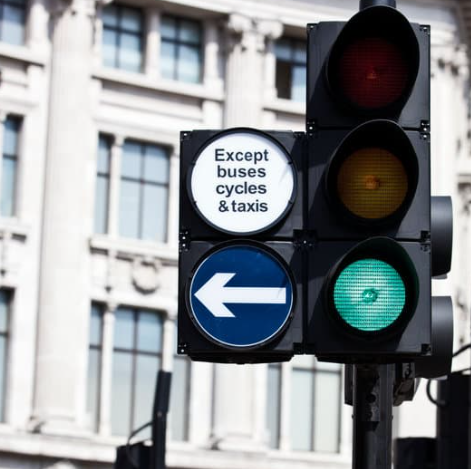
Alongside the recent changes to the Highway Code, designed to better protect the most vulnerable road users, what’s needed is a system that can prioritise key modes like cycling, pedestrians and buses, and improve air quality.
Next generation Intelligent traffic control systems, such as Viva’ Smart Junctions, are using AI-powered sensors to anonymously visualise, classify and respond in real-time to all types of road users, from cars and buses to pedestrians and cyclists (and everything in between).
This data includes counts, speed, pathways and travel patterns. For context, data is sent to an AI-based deep learning algorithm which optimises the signal timings and sends the commands and requests to the traffic signal controller, resulting in a system which can optimize signals and traffic flow accordingly for all road users.
Real-world applications of AI at our junctions
We also know a thing or two about real-life applications of AI and Smart Junctions. Together with Transport with Greater Manchester (TfGM), we set out to develop and trial an AI-based traffic signal solution that would help improve air quality and traffic flow. Results from these real-world trials show that AI can be used to reduce journey times through a junction by an average of 23%.
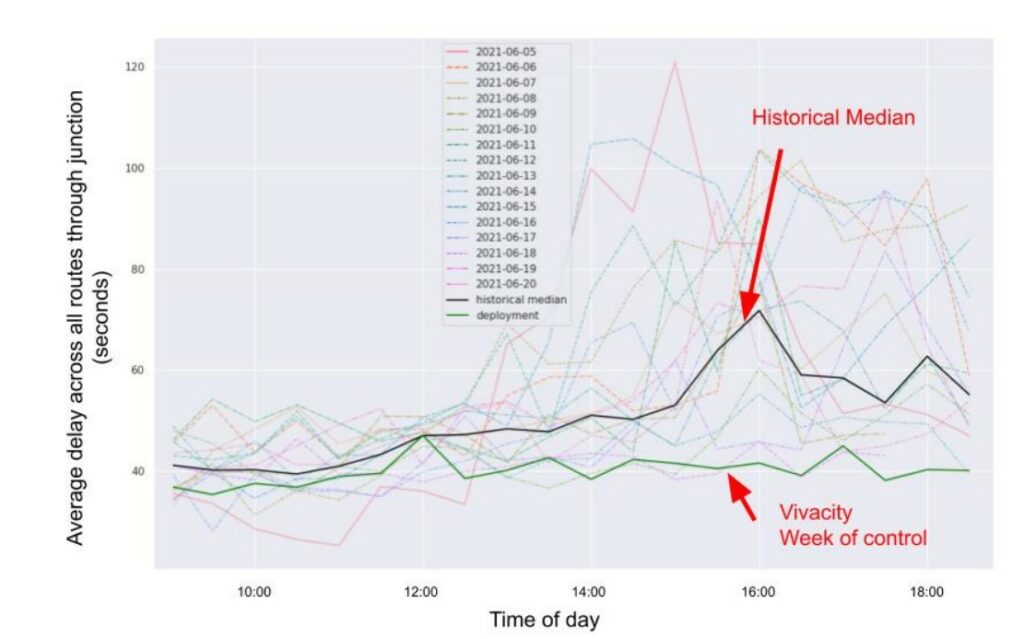
Having deployed our AI system control within Greater Manchester, we have also partnered with Cambridgeshire County Council and Peterborough City Council to roll out the system to five more junctions in these areas, as well as expand Viva’s presence in Greater Manchester, across the boroughs of Manchester and Salford. The specific sites that have been chosen have significant congestion challenges, made more complex by the volume of pedestrians and cyclists that also use those junctions.
What does this mean for the future?
Our research in this field will look at optimising the system for the wide variety of scenarios that authorities may implement in future. We will continue using delay (calculated from journey times for all routes through a region) as the main metric for performance evaluation of vehicle congestion reduction, while adding stopped time for pedestrians and cyclists as a second measure later this year.
In addition, integrating this technology and connectivity infrastructure opens up an array of benefits. A key asset of this is the power to connect with other innovative players and technology.
EDF’s Global Clean Air initiative, for example, focuses on advancing innovation in air pollution monitoring and control around the world to tackle the growing crisis of urban air quality and Breathe London pilot project is part of this. Birmingham’s clean air strategy lists key guiding points on how to improve air quality including improving flows by having smoother, faster journeys to help congestion and reduce emissions.
This only scratches the surface on the possibilities for what different types of connected technology could offer. The increasing availability of such data will allow new players into the field, ushering in GovTech start-ups who will leverage the latest in technology to do things we can’t yet imagine. Who knows where this could lead? For now, the key to realising this ambition is delivering a vastly improved traffic signal system and network through the power of AI.
Please visit the Smart Junctions page to find out more about how Viva’s intelligent traffic signal solution works. Get in touch with our team and we would be happy to run a demo with no obligation or commitment.
Like our content? Sign up to our newsletter and receive the latest updates in your inbox.
Sign-UpHeader image * credit to Simon Brass under Attribution 2.0 Generic (CC BY 2.0) copyright

